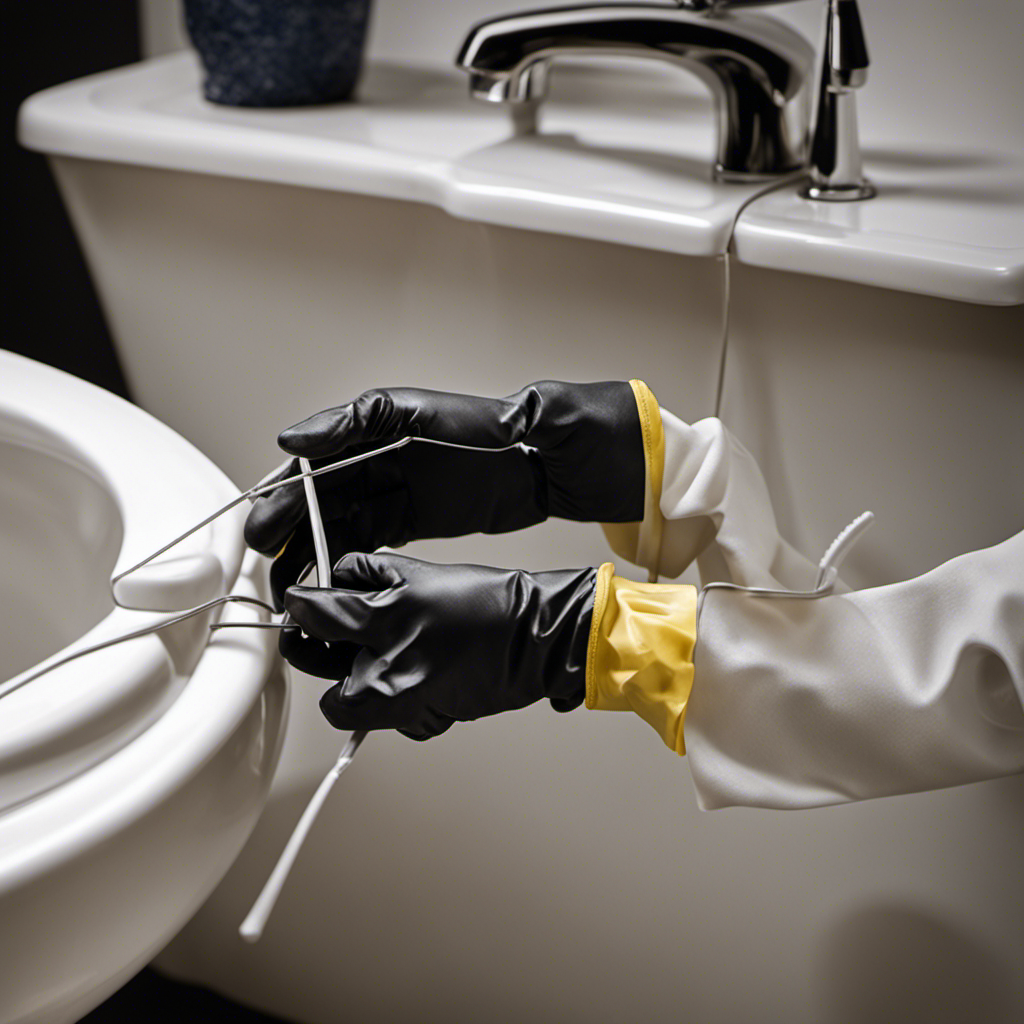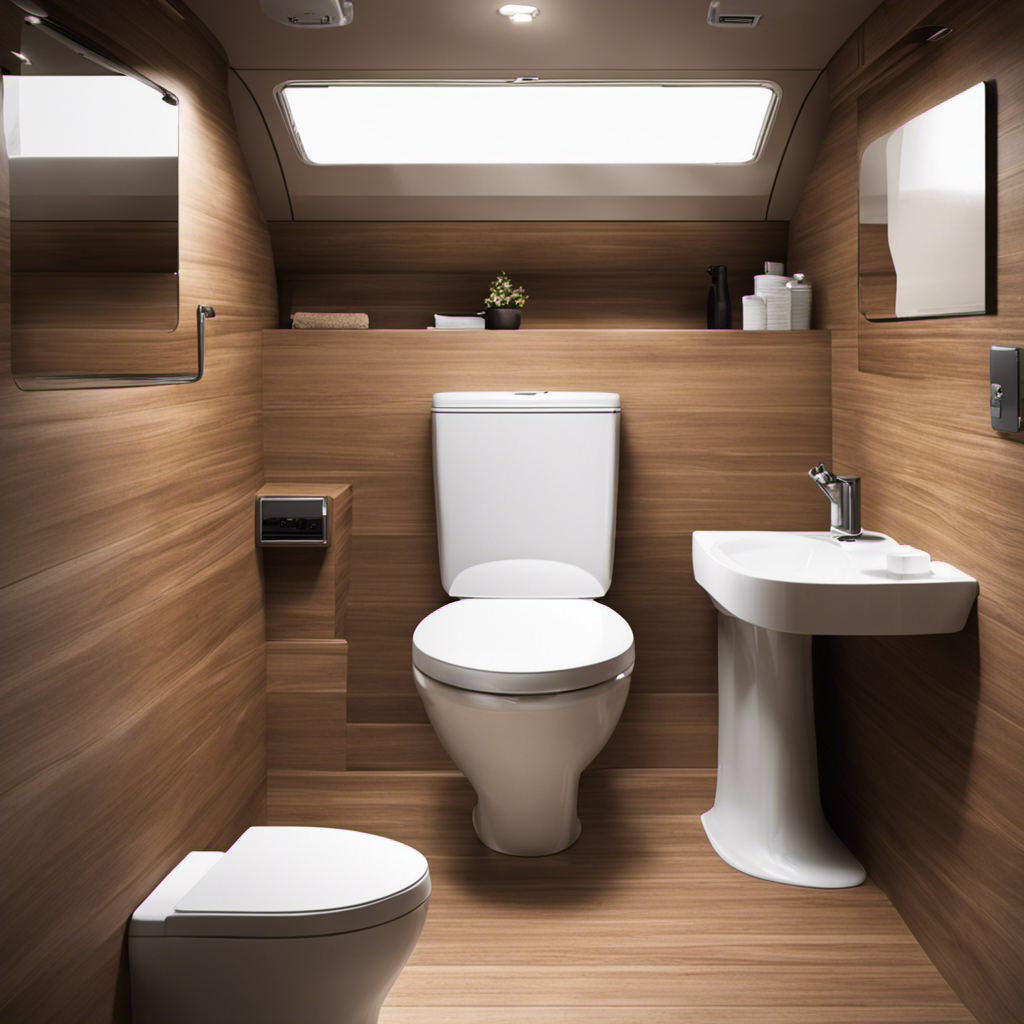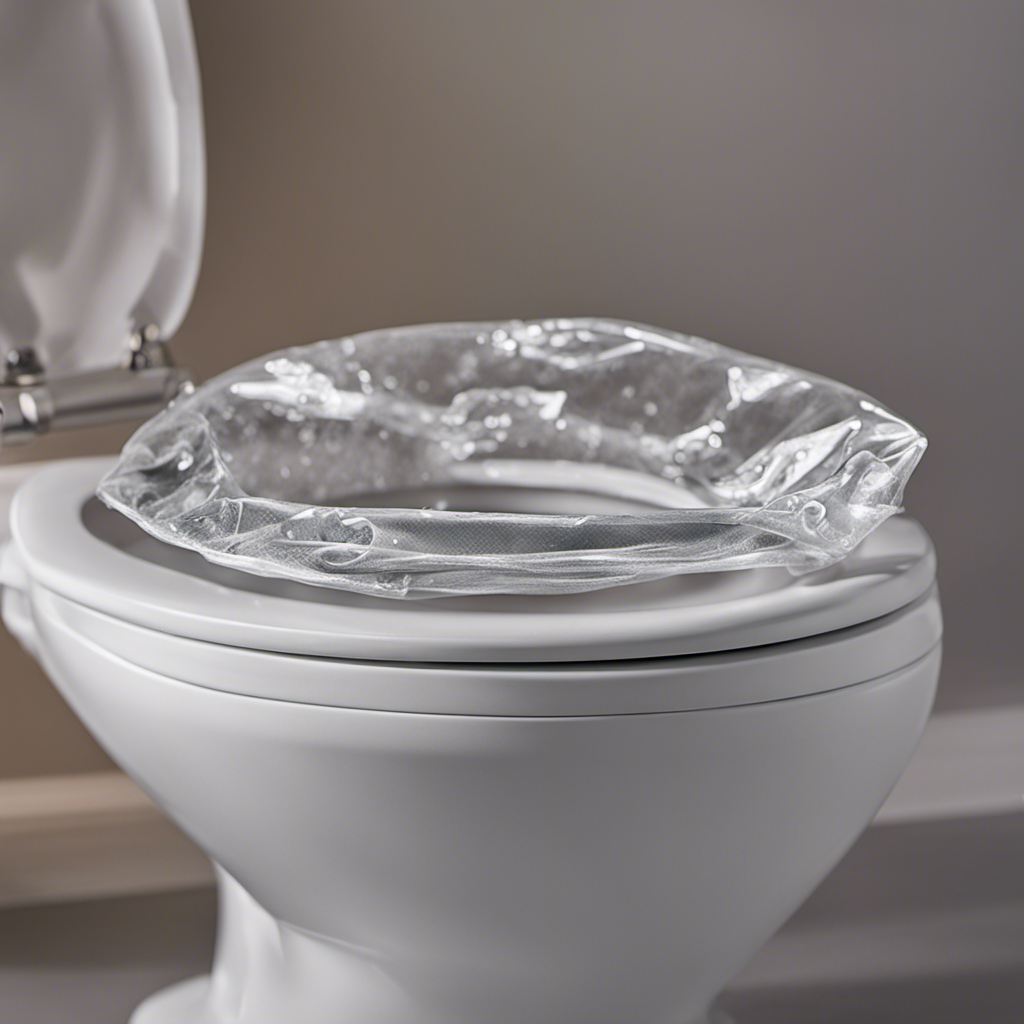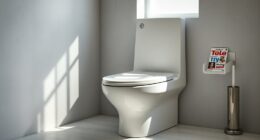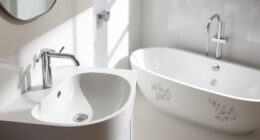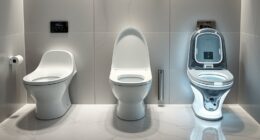So, you find yourself in quite the predicament, don’t you? The toilet is clogged, but alas, you have no plunger to come to your rescue. Fear not, my friend, for I have a solution that will save you from this messy situation.
In this article, we will guide you through the art of unclogging the toilet without a plunger. Get ready to unclog like a pro, using simple household items and techniques that will leave you feeling victorious.
Let’s dive in, shall we?
Key Takeaways
- Flushing non-flushable items, using excessive toilet paper, or low-quality toilet paper can cause toilet clogs.
- Tools and materials needed for unclogging include a plumbing snake or auger, hot water and dish soap, and regular maintenance of the toilet.
- Alternative unclogging methods include using hot water and dish soap, a plumbing snake or auger, being mindful of what you flush, and using the baking soda and vinegar method.
- Prevention tips and tricks include regular cleaning of the toilet, teaching proper flushing habits, ensuring adequate water level for effective flushing, and avoiding flushing items that can cause blockages.
Causes of Toilet Clogs
You might be wondering, ‘What are the causes of toilet clogs?’ Well, let’s dive into the technical details of toilet clog prevention and the common mistakes people make that lead to clogged toilets.
One of the main causes of toilet clogs is flushing items that are not meant to be flushed. Many people make the mistake of flushing things like paper towels, feminine hygiene products, or baby wipes, which can easily clog the pipes.
Another common mistake is using too much toilet paper at once. It’s important to use a reasonable amount and flush multiple times if needed. Additionally, using low-quality or non-biodegradable toilet paper can contribute to clogs.
Tools and Materials Needed
When it comes to unclogging your toilet, there are alternative methods you can try before reaching for a plunger.
One option is to use a plumbing snake or auger to manually break up the clog.
Another method involves using a mixture of hot water and dish soap to dissolve the blockage.
To prevent future clogs, it’s important to avoid flushing items that can easily cause blockages, such as wipes or feminine hygiene products.
Regularly maintaining your toilet and being mindful of what you flush can go a long way in preventing clogs.
Alternative Unclogging Methods
One alternative method to unclog a toilet without a plunger is to use a mixture of hot water and dish soap. This method is effective and requires only a few simple steps.
First, fill a bucket with hot water. Make sure the water is not boiling, as it may crack the toilet bowl.
Add a generous amount of dish soap to the water, as it will help to break down any clogs. Pour the mixture into the toilet bowl slowly, aiming for the center of the bowl.
Allow the mixture to sit for a few minutes, allowing the soap to penetrate and loosen the clog.
Prevention Tips and Tricks
Using hot water and dish soap to prevent clogs is a simple and effective method. Here are three tips to help you maintain your toilet and avoid clogs:
-
Regular Cleaning: Keep your toilet clean by using a toilet brush and cleaning solution. Scrub the bowl and remove any buildup that could potentially cause clogs.
-
Proper Flushing: Teach everyone in your household to only flush toilet paper and human waste. Avoid flushing items like cotton balls, sanitary products, or wipes, as they can easily create blockages.
-
Water Conservation: While conserving water is important, it’s essential to ensure that your toilet has enough water to effectively flush waste. If you notice weak flushing, consider adjusting the water level in the tank to improve its performance.
By following these toilet maintenance tips, you can reduce the chances of experiencing clogs and the need for DIY solutions.
Now, let’s explore the hot water method to unclog a toilet without a plunger.
The Hot Water Method
To unclog the toilet without a plunger, you can try the hot water method. This method involves pouring hot water into the toilet bowl to help dislodge the clog. However, it’s important to follow some safety precautions before attempting this method. Firstly, make sure the hot water temperature is not too high, as boiling water can crack the porcelain. Use water that is hot but not boiling, around 120 to 140 degrees Fahrenheit. Secondly, wear protective gloves to avoid any burns or scalding. Lastly, pour the hot water slowly and steadily into the bowl, aiming for the center of the clog. Allow the hot water to sit for a few minutes, and then flush the toilet. This method can be effective for minor clogs, but if the clog persists, it’s best to call a professional plumber.
| Hot Water Method Safety Precautions | |
|---|---|
| Hot water temperature | Safety precautions |
| Use water around 120 to 140 degrees Fahrenheit | Wear protective gloves to avoid burns |
| Do not use boiling water as it can crack the porcelain | Pour hot water slowly and steadily into the bowl |
| Allow the hot water to sit for a few minutes | |
| Flush the toilet after using the hot water method |
The Baking Soda and Vinegar Method
When it comes to unclogging a toilet, the effectiveness of the baking soda and vinegar method is a popular topic of discussion. This method involves combining these two household ingredients to create a chemical reaction that can help break down the clog.
In addition to exploring the effectiveness of this method, it is also important to consider alternative unclogging methods that may be equally or more effective.
Effectiveness of Method
You’ll be surprised at how effective this method is for unclogging your toilet without a plunger. Here’s why it works:
-
Time Saving Technique: The baking soda and vinegar method is a quick and efficient way to unclog your toilet. Unlike waiting for a plumber or searching for a plunger, you can easily find these household items in your kitchen.
-
Eco-Friendly Solution: By using baking soda and vinegar, you are opting for an environmentally friendly approach to unclogging your toilet. These natural products are free from harsh chemicals and won’t harm the environment or your plumbing system.
-
Effective Results: When you combine baking soda and vinegar, a chemical reaction occurs that creates fizzing and bubbling. This reaction helps break down the blockage and clears the clog. It’s a simple yet effective method that can save you time and hassle.
Transition: While the baking soda and vinegar method is highly effective, there are also alternative unclogging methods you can try.
Alternative Unclogging Methods
An alternative method for clearing a clog in your toilet is by using a wire hanger. This DIY solution is a natural remedy that can effectively unclog your toilet without the need for a plunger.
To use this method, you will need a wire hanger, a pair of pliers, and some gloves for hygiene purposes. Follow these steps to clear the clog:
- Straighten the wire hanger and create a small hook at one end.
- Put on gloves to protect your hands.
- Insert the hooked end of the wire hanger into the toilet drain.
- Gently push and twist the hanger to break up the clog.
- Once the clog is dislodged, flush the toilet to ensure proper drainage.
Remember to exercise caution and avoid using excessive force to prevent any damage to your toilet. This simple DIY solution can save you from the inconvenience of a clogged toilet and the need to call a plumber.
The Wire Hanger Method
To unclog the toilet without a plunger, try using the wire hanger method. This method is a simple yet effective way to clear a clogged toilet. Here are some benefits of using the wire hanger method:
-
Readily available: Wire hangers are commonly found in most households, making it a convenient alternative to a plunger.
-
Cost-effective: Unlike purchasing a plunger, using a wire hanger is a cost-effective solution for unclogging a toilet.
-
Versatile: The wire hanger method can be used to remove various types of clogs, including those caused by toilet paper, waste, or foreign objects.
To use the wire hanger method, straighten the hanger and form a small hook at one end. Insert the hooked end into the toilet drain and gently maneuver it to dislodge the clog. Be careful not to scratch the porcelain. Once the clog is loosened, flush the toilet to ensure it is completely cleared.
Preventing Future Clogs
Now that you’ve successfully unclogged your toilet using the wire hanger method, it’s important to take steps to prevent future clogs. Proper toilet maintenance is key to keeping your plumbing system running smoothly.
Here are some DIY unclogging techniques to help you maintain a clog-free toilet.
Firstly, be mindful of what you flush down the toilet. Avoid flushing items like sanitary napkins, baby wipes, or paper towels, as these can easily cause blockages. Only flush toilet paper and human waste.
Secondly, consider using a drain snake or auger to remove any small clogs before they become major issues. These tools can help break up and remove blockages without the need for a plunger.
Lastly, regular cleaning and maintenance can prevent buildup in your toilet pipes. Use a toilet brush and cleaner to keep the bowl clean, and periodically flush hot water and vinegar down the drain to dissolve any mineral deposits.
Conclusion
In conclusion, now you know three effective methods to unclog your toilet without a plunger.
Whether you choose the Hot Water method, the Baking Soda and Vinegar method, or the Wire Hanger method, you can conquer those clogs with confidence.
Remember, prevention is the key to avoiding future fiascos, so be mindful of what you flush down the toilet.
Stay vigilant and bid adieu to those troublesome toilet troubles.
